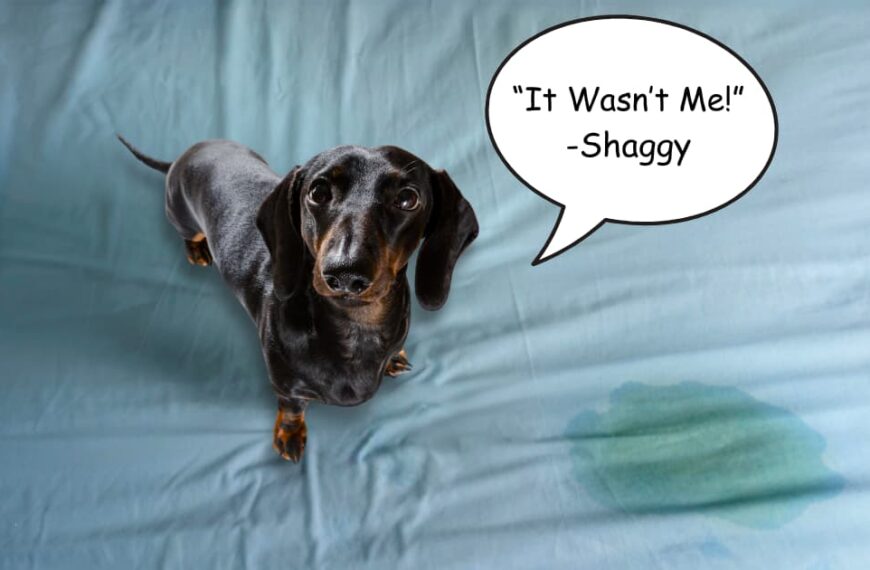Ah, the dog bed: a cozy and blissful resting place for our beloved pets.
Yet, it is a luring magnet for all the fur, dirt, drool, stains, unexpected messes, and “pleasant” odors our furry friends bring along.
And now, as a fellow dog owner, you may be wondering how to wash a dog bed with stuffing and return it to its snug and clean state, but you need to know where to start.
Well, you are not alone!
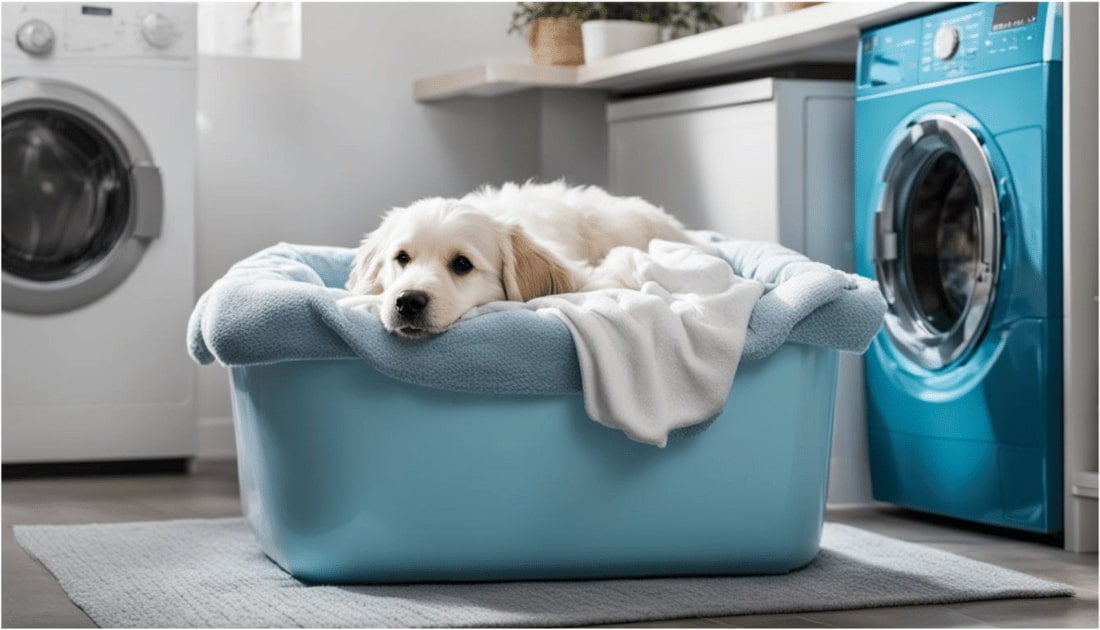
But, why do so many pet owners face a problem when it comes to cleaning their dog’s bed?
Purchasing a stuffed dog bed is like buying a fancy gadget without a user manual.
When the time comes to wash the stuffed dog bed, the lack of instructions leaves pet owners wondering:
“Do I throw the whole thing in the washing machine?”
“What type of detergent should I use?”
“How do I remove those pesky stains?”
Sound familiar? Then, you’re in the right place.
Today, you will learn to transform your canine companion’s dirty bed into a freshly-scented, fluffy oasis.
This guide will provide pre-cleaning tips and strategies to tackle stubborn pet messes.
Also, you will gain material-specific cleaning techniques to wash the dog bed effectively without losing shape.
So, follow these reliable methods to learn how to wash a dog bed with stuffing and refresh your furry friend’s sleeping area.
- Essential Tools and Materials
- Pre-Cleaning: Laying the Groundwork
- Washing a Stuffed Dog Bed with a Removable Cover
- Cleaning the Dog Bed Stuffing
- Washing a Stuffed Dog Bed Without a Removable Cover
- How Often Should You Wash a Dog Bed with Stuffing?
- Additional Tips to Maintain Hygiene and Cleanliness
- Conclusion
- FAQs
- What's the best way to address fleas on dog bedding during the cleaning process?
- Is Tide considered safe for use around dogs?
- Can Dawn dish soap be used to launder a dog bed effectively?
- What steps should be taken to clean a washing machine after washing pet bedding?
- How often is it recommended to replace a dog's bed?
- Is it ok to use a pressure washer for cleaning a dog bed?
- What's an effective method for cleaning dog bedding using vinegar?
- How can one ensure a dog bed remains lump-free after washing?
Essential Tools and Materials
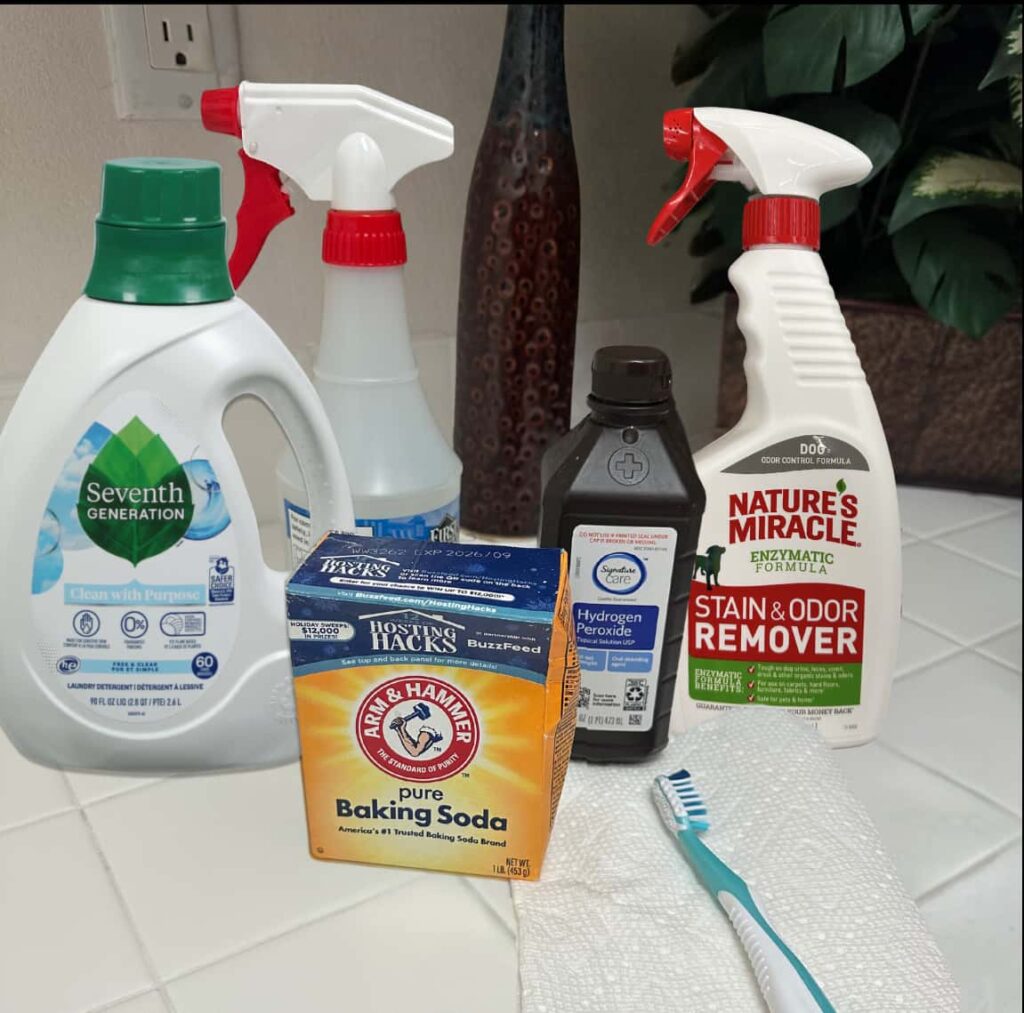
Before we dive into how to clean a dog bed with stuffing, we need to gather all the materials you will need for the process.
With the following tools, cleaning your pup’s bed can become a more manageable undertaking:
- Mild Pet-Safe Laundry Detergent: Opt for a gentle detergent formulated for pet stains and odors like Tide Free and Gentle or Seventh Generation Free and Clear laundry detergents. It will effectively remove dirt and smells from the dog bed without irritating your pet’s skin.
- Enzyme-based Pet Stain Remover: Choose a product like Nature’s Miracle Stain and Odor Remover that is safe for pets and designed to break down proteins and remove stains (urine, feces, muddy paw prints, drool, etc.). It will ensure a thorough cleaning and help neutralize smells.
- Clean Cloth (preferably white to prevent color transfer): Useful for blotting the pet stain remover on the soiled area.
- Soft-Bristled Brush (e.g., a toothbrush): Collects pet hair and tackles dirt logged in the nooks and crannies of your canine’s bed. Ideal for dry or crusty spots.
- Washing Machine: Check the care label on the dog bed for any washing instructions to ensure it is machine washable. Follow the recommended guidelines.
- Mesh Laundry Bag or Pillowcase: Protects the stuffing during machine washing, preventing it from clumping together and providing even cleaning.
- Large Tub or Sink (for hand washing): The preferred cleaning method for delicate fabrics and materials.
- Large Clean Towels or Sheets: Provides a clean and dry surface for drying the bed. Absorbs excess water and ensures the bed dries evenly.
- Baking Soda: Excellent for sprinkling on the bed before washing to combat lingering pet odors. It also helps loosen dirt and provides a natural way to freshen up the bed.
Recommended Materials:
- White Vinegar: Acts as a natural deodorizer and disinfectant. Useful for neutralizing smells and breaking down blemishes.
- Hydrogen Peroxide (3%): Effective for treating blood stains due to its oxygenating properties. Perfect for breaking down and removing stubborn marks.
- Lint Roller: An excellent pet hair remover.
Using these supplies, you can effectively clean your dog bed while keeping it fluffy and comfortable for your furry friend.
Pre-Cleaning: Laying the Groundwork
Now, cleaning your pet’s bed isn’t simply a matter of tossing it into the washer. It takes a bit more finesse, called pre-cleaning.
Pre-cleaning is an essential step in preparing the dog’s bed for washing. It makes the cleaning process easier and more effective for you and your furry friend.
Preparing the Dog Bed for a Fresh Clean
Start by removing any toys or objects from the bed.
Next, take off any removable covers present on the dog bed. The cover and inner material typically have different cleaning instructions; therefore, we will clean them separately.
Thoroughly examine the dog bed cover for rips or tears, especially from bed-chewing.
To prevent a minor issue from becoming a major one, swiftly repair these damages with a simple needle and thread.
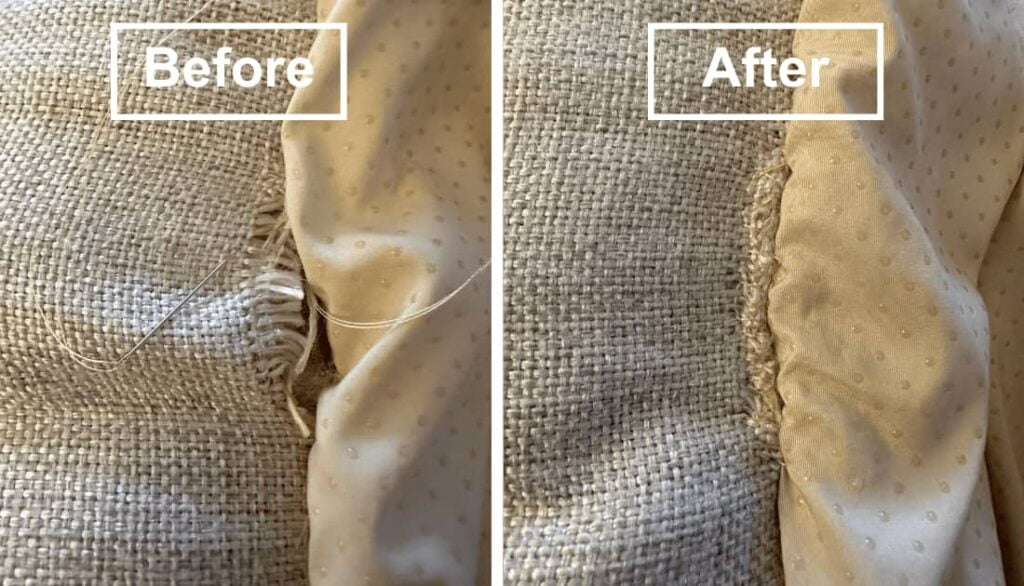
If you notice any dry or crusty stains like mud or drool, use a dry soft-bristled brush or lint roller to dislodge the debris without damaging the fabric.
Once you finish examining the cover, take it outside or to an easy-to-clean area in your home to shake out as much loose fur, dandruff, and dirt as possible.
Make sure to give it a good shake to dislodge larger particles that can clog your washing machine.
Lastly, double-check for any zippers or buttons on the bed. Make sure they are closed and securely fastened.
Any unruly zippers can damage your pet’s bed or snag on other items in your laundry load.
Vacuuming Pet Hair and Debris
The next part of the pre-cleaning process is vacuuming the bed.
Use a strong-suction vacuum cleaner with an upholstery attachment to vacuum one side of the dog bed thoroughly.
Pay close attention to the corners and seams where fur and other particles tend to accumulate.
Not only will vacuuming help suck up all those pesky hairs, but it will also get rid of any lingering dust mites or allergens hiding within the folds.
After one side is complete, flip it over and do the same to the other side.
Remember that patience is key here; rushing through this step won’t do you any favors later.
Removing as much loose debris and fur as possible will set the stage for an effective deep clean.
Checking the Dog Bed Care Instructions Label
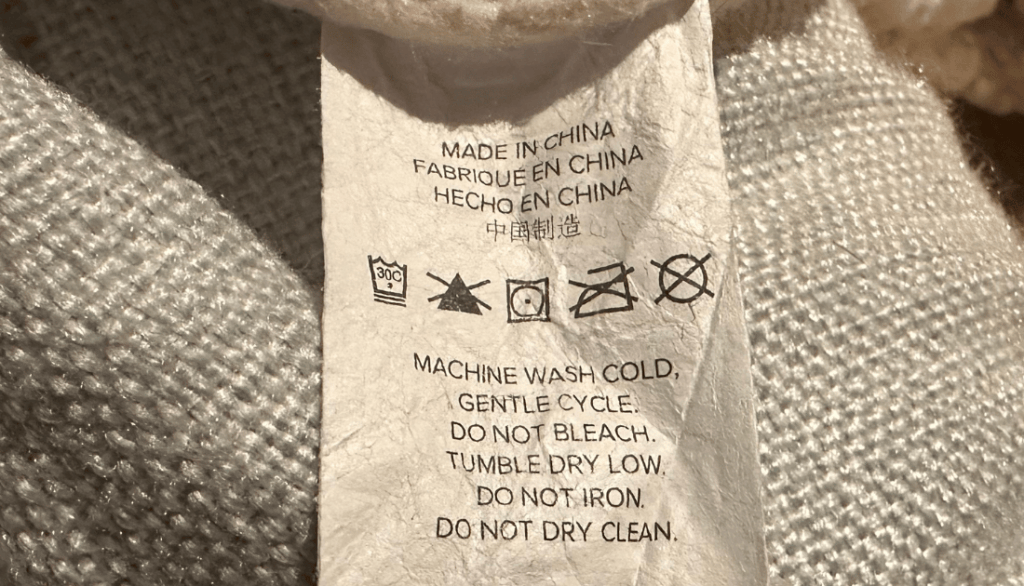
Before launching into the next part of the cleaning process, take a moment to read your dog bed’s care tag.
This tiny tag sewn into a corner or hidden in a seam can tell if the bed is machine washable or hand-wash only.
It may even provide instructions about the best temperature settings, detergents, and drying methods.
Following these instructions will not only extend the life of the dog bed but will keep it fresh and comfortable for your canine companion.
However, if you discover that the care label is missing or has become unreadable over time, don’t despair!
Your safest bet is to use a gentle cleaning cycle with cool water and mild detergent, followed by air drying.
By doing so, you will help minimize the risk of damaging even the most delicate of fabrics.
Spot Cleaning Stains and Odor Removal
The next crucial step after a thorough vacuuming session is to pretreat the bed.
The Spot Cleaning chart below outlines the recommended cleaning method for different types of stains, ranging from urine spots to grass markings.
This will help you deal effectively with any messes your pet may leave behind, as not all spot treatments are the same.

Use a more generic set of spot-treatment steps for blemishes not listed in the chart.
Using the soft cloth and pet-safe stain remover, gently dab the affected area, mark or spill.
Let the solution sit for 10 to 15 minutes for fresh marks or 15 to 30 minutes for older stains, enabling deep penetration into the fabric fibers.
Doing so will allow the enzymes in the spot remover solution to break down the stain molecules before washing.
Once the recommended time is up, gently scrub the treated spots with the soft-bristled brush until the marks fade.
To prevent spreading, scrub from the outside of the stain to inwards.
For stubborn spots, expect to invest some elbow grease and go through many rounds of dabbing and scrubbing to see a noticeable difference.
Once you treat all stains, rinse each area with clean water to remove the spot remover solution.
Washing a Stuffed Dog Bed with a Removable Cover
With those stubborn spots at bay, we can dive into the heart of the matter: washing the cover.
Whether you use a washing machine or hand washing, these steps will help you clean your dog’s bed cover efficiently.
Machine Washing the Bed Cover
For removable covers that are machine washable, you want to make sure your washer’s drum is big enough for the cover to fit.
This will prevent cramming and avoid potential damage to the cover or the machine.
Tip: If it doesn’t fit in the washer, you can wash it by hand or even bring it to a nearby laundromat.
Place the bed cover into the washing machine and add the mild, dog-friendly detergent. Run the wash on a gentle spin cycle in cold water.
If your machine allows extra rinse cycles, use them to remove all detergent. If not, run an additional rinse cycle for optimal cleanliness.
Hand Washing the Bed Cover
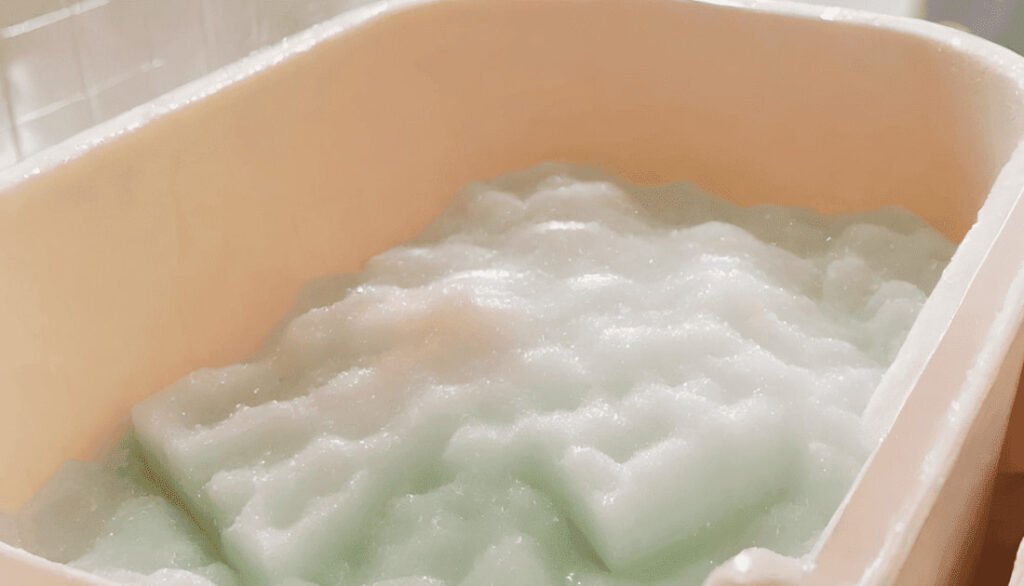
Sometimes, the dog bed is not machine-washable, or a washer is inaccessible. In these instances, hand washing is best.
Start by filling a large tub or sink with lukewarm water and add your pet-friendly detergent.
To help deodorize the cover:
- Add baking soda to the soapy water.
- For light odors, add about ½ cup of baking soda.
- Add 1 to 2 cups of baking soda for moderate to strong odors.
With the soapy solution complete, immerse the cover in the water and allow it to soak for about 25 to 30 minutes.
The goal is to let the cleaning solution work its magic.
While the cover is in the water, use your hands to knead the fabric like a baker kneads dough.
Make sure you pay extra attention to areas with stubborn markings or smells.
Continue kneading for 5 to 10 minutes to ensure thorough cleaning.
Once satisfied, rinse the bed cover under cool running water until all soap and baking soda residue is removed.
It is vital to remove all soap residue because it can irritate your canine’s sensitive skin.
Lastly, give it a gentle squeeze (don’t twist or wring) to remove excess water.
Drying the Dog Bed Cover
Drying is the final and most crucial step in cleaning a dog bed cover.
Proper drying is essential to prevent mildew or mold, which could undermine your hard cleaning work.
The best drying method for a dog bed depends on its cover material. Tumble drying on a low heat setting is suitable for synthetic materials like polyester.
However, fabrics like cotton undergo air drying to reduce the risk of shrinkage and damage.
To simplify the process, refer to the chart below to determine the best drying methods based on the type of dog bed fabric:
| Dog Bed Cover Fabric Type | Recommended Drying Method |
|---|---|
| Synthetic (Polyester, Nylon) | Low heat tumble drying with wool dryer balls |
| Microfiber | Air drying or low heat tumble drying |
| Cotton | Air drying (drying rack or clothesline) |
| Fleece | Air drying (avoid prolonged exposure to sunlight) |
| Canvas | Air drying or low heat tumble drying |
| Waterproof/Outdoor | Air drying (lay flat or hang in shade; avoid excessive heat) |
| Linen | Air drying or low heat tumble drying |
| Faux Fur | Air drying or low heat tumble drying (low-heat to avoid damage) |
| Wool | Air drying flat to prevent stretching |
| Leather | Air drying; avoid exposure to direct sunlight and heat sources |
To successfully air dry the dog bed cover, choose a well-ventilated area, such as outdoors on a nice day or indoors near a window or fan.
You may have to let it sit for a few hours to dry.
Make sure to flip the cover periodically, helping to speed up the drying process and ensuring all parts dry evenly.
Tip: Dry the bed outside in direct sunlight. The sun is a natural disinfectant that will sanitize the fabric and eliminate any remaining bacteria.
Double-check every nook and crevice of the stuffed dog bed cover to ensure it is dry before letting your furry friend back on it.
Cleaning the Dog Bed Stuffing
With the dog bed cover taken care of, it’s time to address the core of our pet’s haven- the stuffing.
Often overlooked, the stuffing can become a breeding ground for allergens, odors, and pests.
Thus, cleaning the material inside a dog bed is an important step when providing a cozy and hygienic spot for your furry companion. So, let’s begin!
Identifying the Type of Stuffing Material
First, determine the type of stuffing in your pup’s bed by examining the care label.
Much like our canine companions, not all dog beds are created equal, and cleaning each stuffing material isn’t a one-size-fits-all task.
For example, dog beds made with memory foam should never be submerged in water. This is because the foam tends to absorb water like a sponge, which could lead to the formation of mold and mildew.
On the other hand, if your dog’s bed is filled with cedar chips, replacing the filling instead of washing it is best. Cedar has natural pest-repelling properties that can be compromised when soaked in water.
To properly clean your dog’s bed, refer to the table below. This helpful resource outlines the recommended washing methods for different types of stuffing used in dog beds.
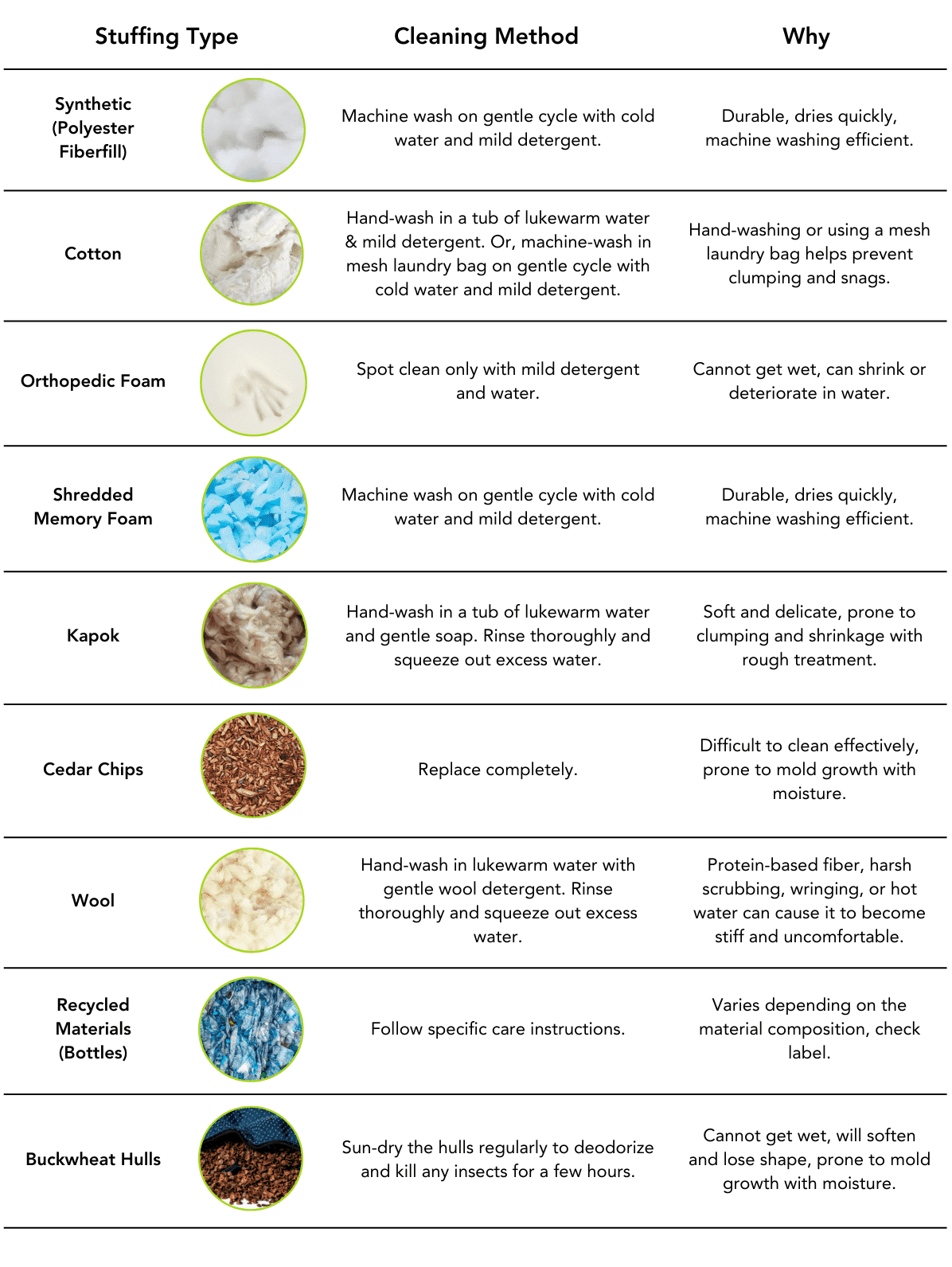
Cleaning the Stuffing in a Washing Machine
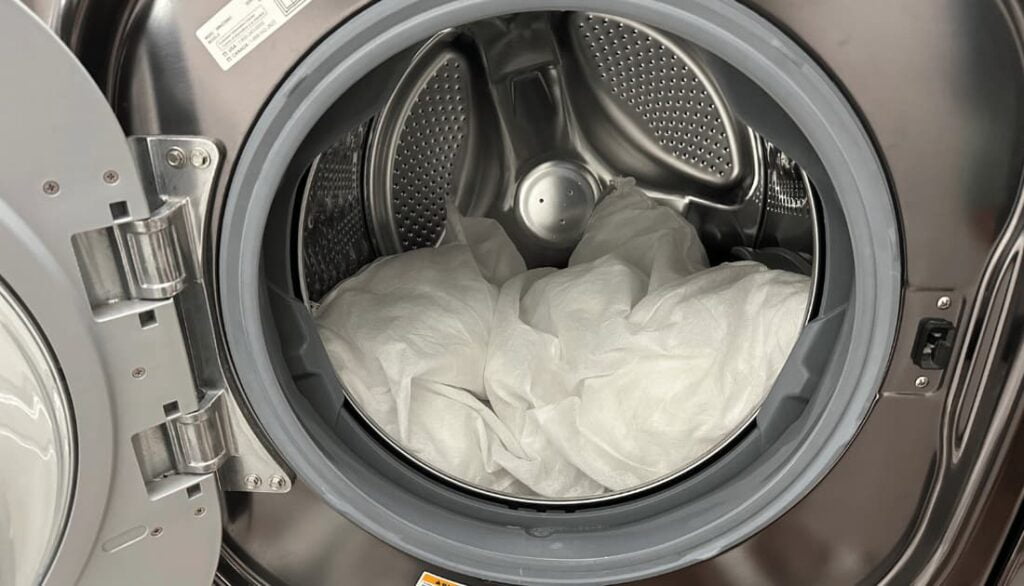
If the dog bed stuffing is machine washable, place it inside a mesh laundry bag or pillowcase.
This will prevent the material from clumping together during the wash cycle.
Tip: Avoid overloading the machine. If needed, split the stuffing into multiple batches and wash each batch separately.
Next, add some mild, pet-friendly detergent to the wash. Skip fabric softeners or harsh chemicals to avoid skin irritation.
Choose a gentle or delicate cleaning cycle with cold or lukewarm water on the washing machine.
Once the wash is complete, make sure the material is rinsed and detergent-free before moving on to the drying phase.
Hand Washing the Inner Material of the Dog Bed
While machine washing is often the go-to option for many pet owners, cleaning the inner material by hand is equally effective, especially for delicate or easily damaged materials.
Like hand washing the dog bed cover, fill a large tub or sink with cool to warm water.
Add a gentle pet-safe detergent and mix the detergent and water manually to create a soapy solution.
Next, submerge the stuffing into the water and use your hands to agitate and squeeze the material.
Like before, if there are any stained or smelly areas, spend more time rubbing the material between your hands.
Once you have scrubbed all sections, drain the soap solution and replace it with clean water without detergent for rinsing.
Continue to rinse the bed filling until all bubbles have vanished.
Then, gently squeeze out any excess water, leaving you with damp stuffing ready for the drying process.
Air Drying the Stuffing
Lastly, it is time to air dry the stuffing.
Lay clean, dry towels or sheets outside on a flat, sunlit surface. Depending on the type of material, ensure every section receives ample sunlight and breeze.
While it dries, periodically turn it over and fluff the filling to restore its loft.
For those who live in more humid climates or lack outdoor space, indoor air drying is still effective, though it may take longer.
To speed up the indoor drying process, lay the stuffing on clean towels or sheets in a room with a fan or dehumidifier.
Remember, regardless of your drying method, ensure the dog bed stuffing is completely dry before use.
Any lingering moisture can lead to mildew growth, which is unhealthy for you and your pup!
Washing a Stuffed Dog Bed Without a Removable Cover
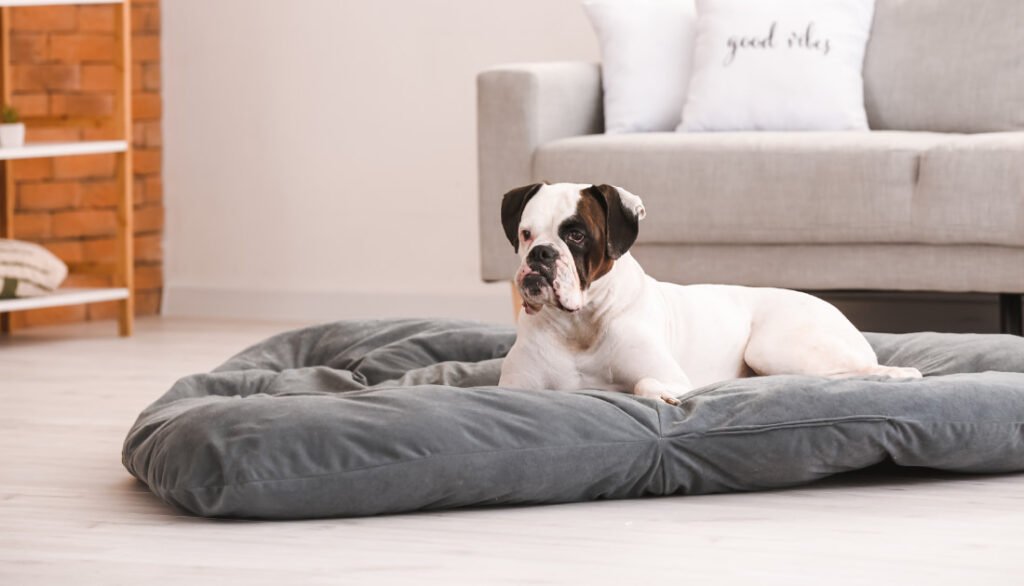
Sometimes, you may find yourself dealing with a dog bed with an un-removable cover. Luckily, even in this situation, cleanliness is still achievable!
Maintaining a clean dog bed with stuffing without the option of removing the cover means you must place a more significant emphasis on manual cleaning methods.
This would include spot cleaning, surface wiping, and thorough drying.
Let’s get started!
Begin by vacuuming both sides of the bed, paying close attention to the seams and corners.
Sprinkle baking soda all over the bed’s surface and let it sit for 30 minutes to tackle lingering smells.
Once the time is up, vacuum up the powder and address visible markings.
For fresh messes, dab the area with a clean cloth to absorb as much as possible. The sooner you act, the easier the clean-up.
Lightly scrub the area using the soft-bristled brush and stain remover for older stains.
Next, fill a tub or sink with cool water and pet-friendly detergent. Submerge the bed and allow it to soak for 15 to 30 minutes to loosen dirt or grime.
Gently swish and squeeze the bed in the water, avoiding wringing. Imagine you are giving the dog bed a massage on its soothing spa day.
To rinse, replace the soapy water with clean water and perform another round of swishing and squeezing. Repeat this process 2 to 3 times to remove all traces of detergent.
Carefully lift the bed from the water and remove as much excess water as possible.
Lay the bed on a clean towel in a sunny or well-ventilated area, turning it occasionally to promote even drying.
Once completely dry, fluff it up to restore its loft and bounce.
Last but not least, perform a sniff test and appreciate the effort you put into cleaning your pup’s haven.
It is ready for another round of snoozes!
How Often Should You Wash a Dog Bed with Stuffing?
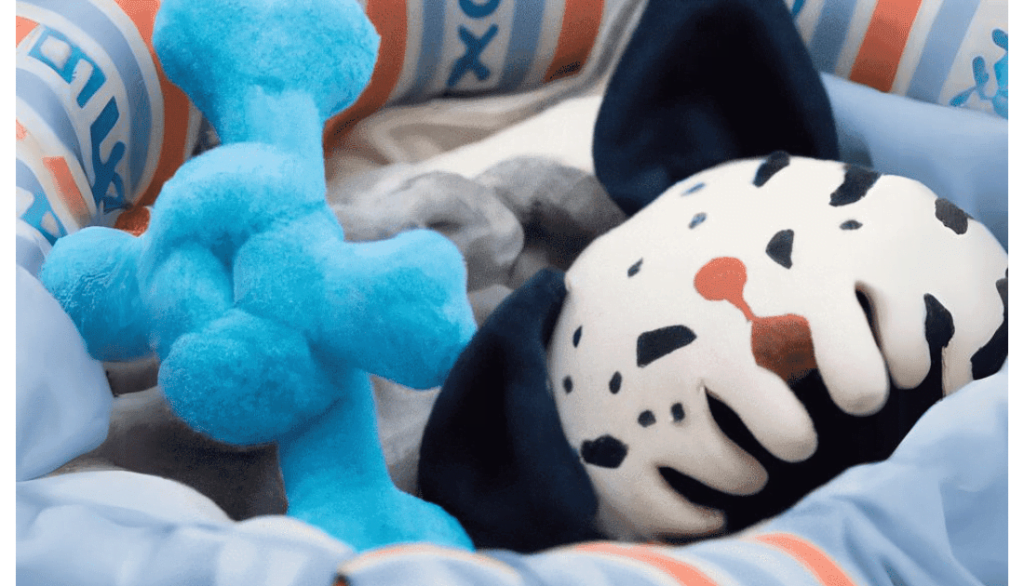
One of the common questions that pet parents often have is about the frequency of washing their dog’s bed.
Well, it depends on your dog and their habits.
In general, it is recommended to wash the dog bed every 2 weeks to help prevent the buildup of germs, allergens, and disease-causing organisms.
But what if you have an elderly dog or a puppy who hasn’t mastered their bathroom routine yet? Or perhaps your pet loves to roll around in the dirt?
In these cases, you must clean it more often, either once a week or every few days.
Before you let out an exasperated sigh, thinking about all that laundry work ahead of you – don’t fret!
Washing your dog’s bed does not always mean doing a complete clean with water and detergent every single time.
In some instances, shaking off loose dirt or using a vacuum cleaner can do wonders for maintaining cleanliness between washes.
Additional Tips to Maintain Hygiene and Cleanliness
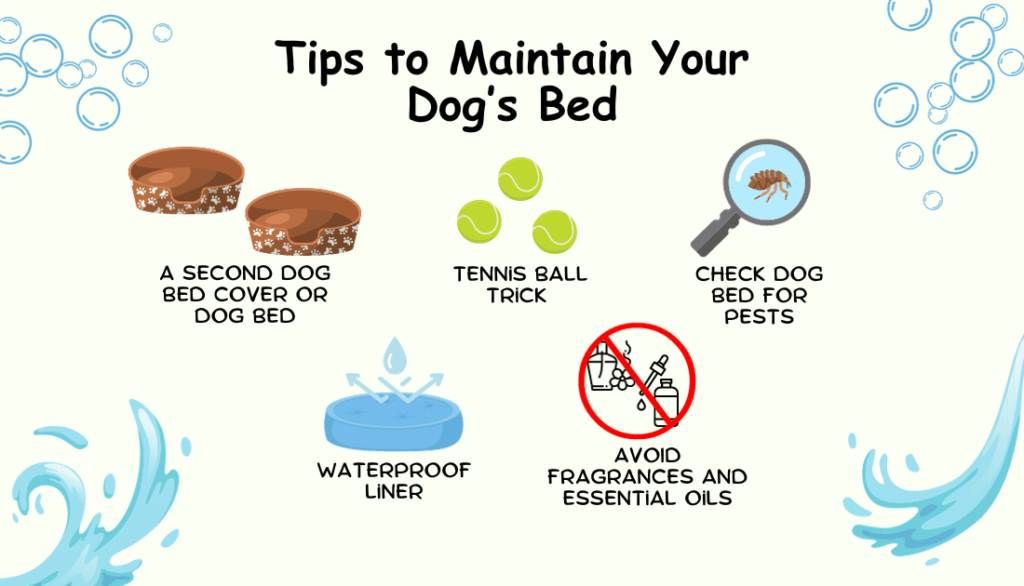
As a bonus, consider these additional expert tips to ensure your pup’s bed stays fresh and well-maintained.
- Invest in an extra cover for the dog bed (or a second dog bed). This way, you can easily switch covers (or beds) while one is being cleaned, ensuring your pet always has a clean place to rest.
- Try the tennis ball trick. Toss in 2-3 clean tennis balls or dryer balls in the dryer with the dog bed cover. The bouncing balls help fluff the stuffing and remove hair more effectively.
- Now and then, check the bed for pests. Fleas and ticks pose a significant risk to our four-legged friends. And their bedding can provide a perfect hideaway for these unwanted intruders.
- If your dog is prone to accidents, consider using a waterproof liner inside the bed. This will protect the inner material from moisture and make cleaning easier.
- Avoid using fragrances or essential oils to freshen up a dog bed. Due to their sensitive noses, these strong smells can be overpowering. Also, fragrances/oils can cause skin irritation or respiratory problems in dogs.
Conclusion
Congratulations! Pat yourself on the back because you have successfully made it to the end of this comprehensive guide on how to wash a stuffed dog bed.
From material gathering and pre-cleaning to the washing and drying of the cover and inner material, you should now feel well-equipped to tackle the task.
Think of regular cleaning as an act of love for our pets.
Sure, our furry friends may not mind all the dirt and grime. But, maintaining a clean dog bed is as critical to pet wellness as a balanced diet and regular veterinary check-ups.
A clean dog bed can help reduce the risk of health issues caused by pests and maintain the cleanliness of your home.
Most importantly, it will contribute to the comfort and well-being of your pet and your household.
So, the next time you need to clean your pup’s bed, remember that each wash brings comfort to your pet, making every effort worthwhile!


